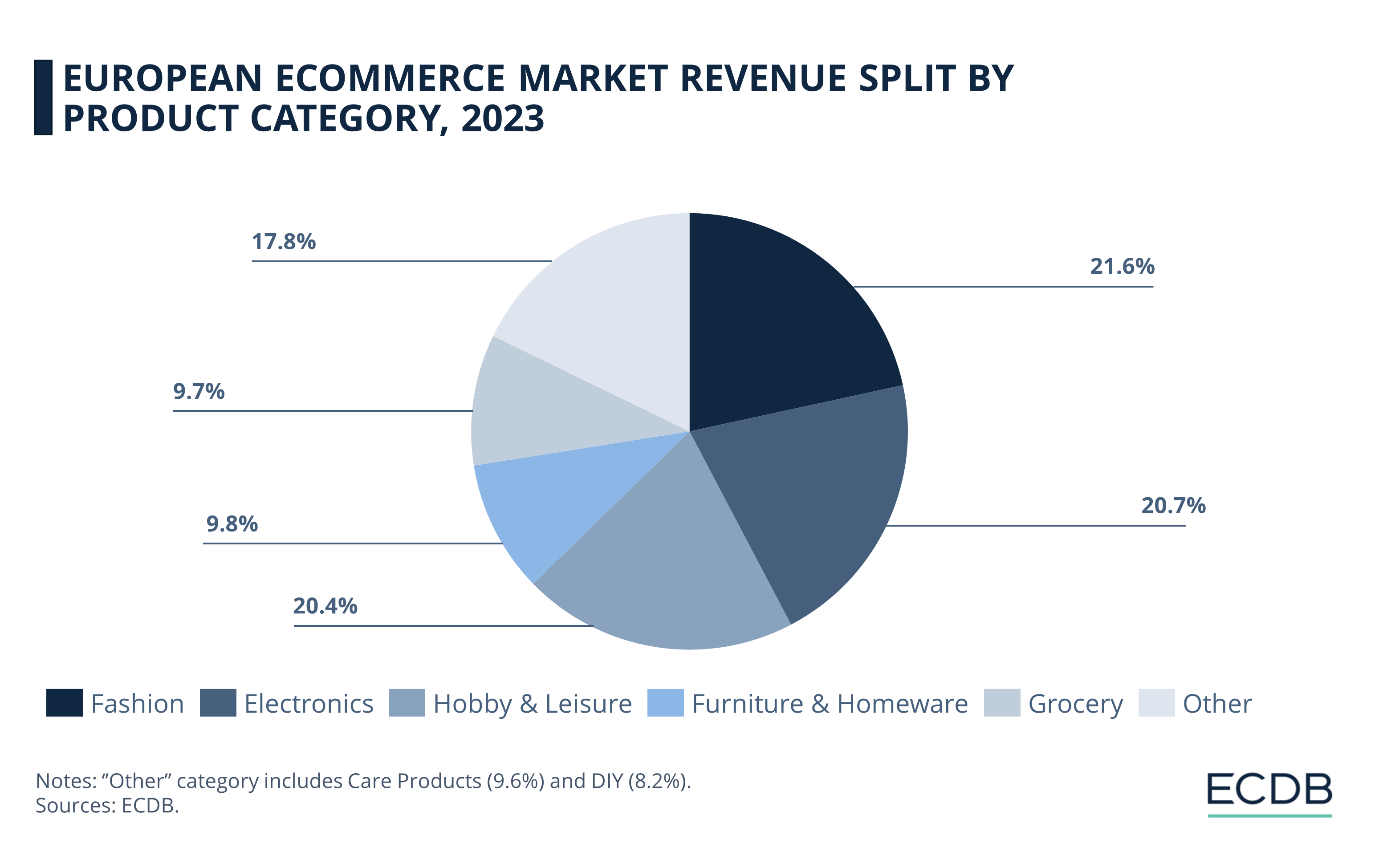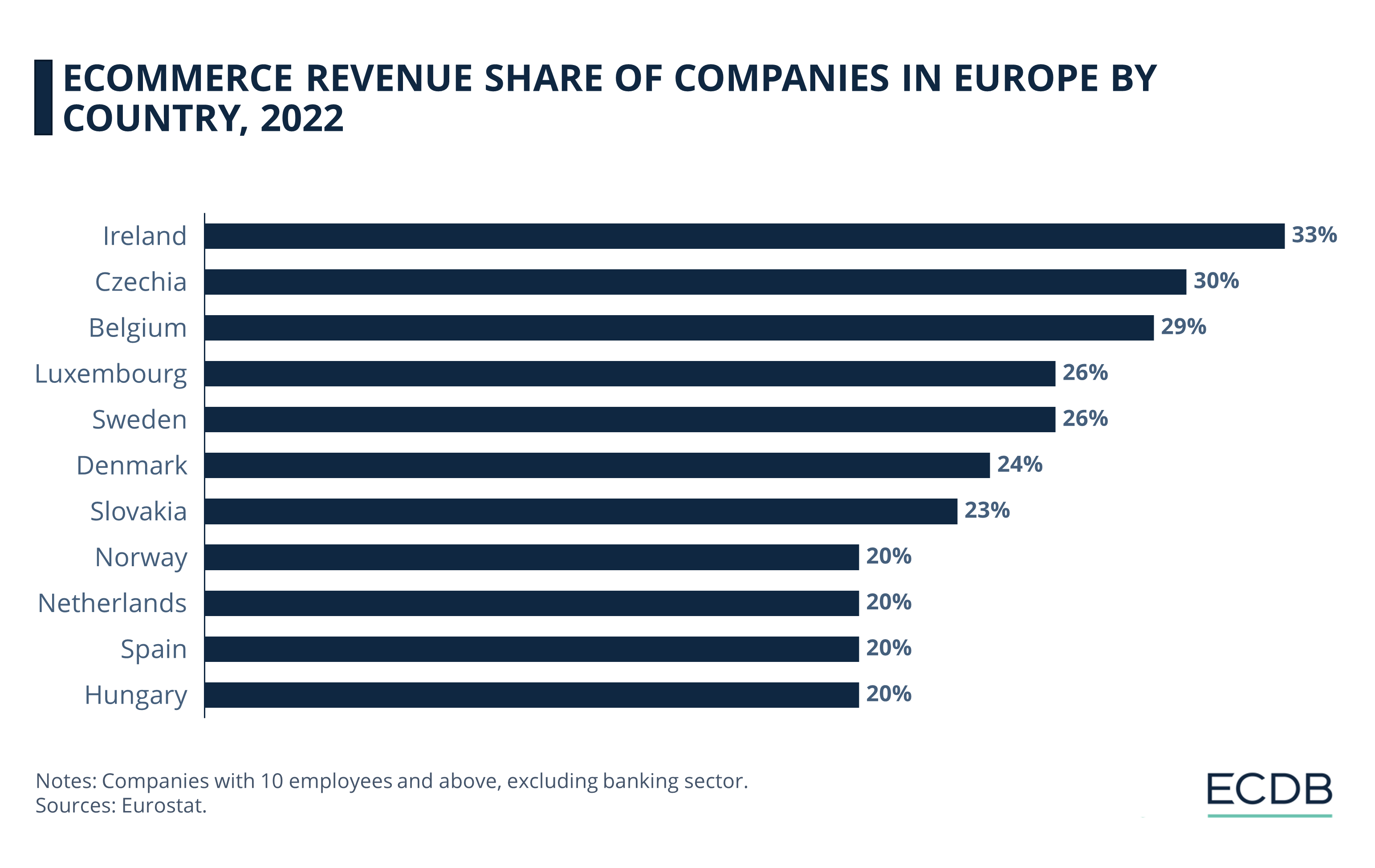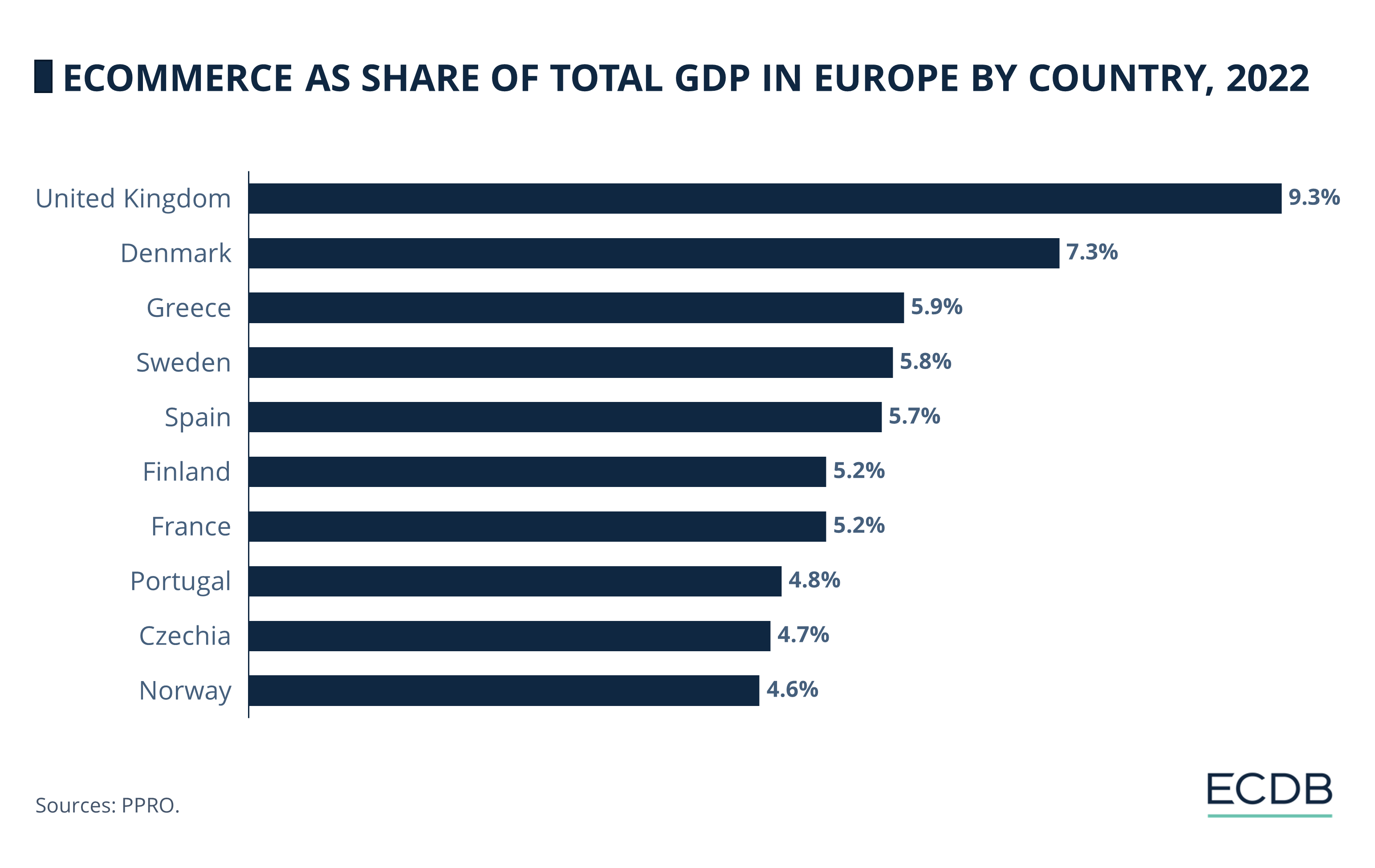eCommerce: European Market by Growth & Revenue
eCommerce Market in Europe 2024: Continued Growth
After a degrowth in 2022, the European eCommerce market is set to continue growing. Learn more about the market size, growth and revenue.
April 18, 2024Download
Coming soon
Share

Europe, although geographically small, is one of the most important economic centers in the world. Historically renowned for strong manufacturing industries such as automotive, chemical, and electronics, among others, the continent has also become a driving force in the global digital economy.
While Europe’s leading economies like Norway, the UK, Germany, or the Netherlands already have eCommerce penetration rates of around 80% and higher, there is a lot of potential still to be tapped in smaller economies in the South and East like Greece, Portugal or Poland.
On average, 62% of consumers in Europe used online shopping channels in 2022. But what about Europe’s eCommerce market size in terms of revenue? It's critical to look at how this sector is performing financially. Revenue is a key indicator, providing nuanced insights into the health and growth of eCommerce within Europe.
European eCommerce Market Revenue to Surpass US$750 billion by 2027
It's no secret at this point that the pandemic was a huge boost for ecommerce in many regions of the world. Europe was no exception, with market sales of US$423 billion in 2019 rising to US$589 the following year, before jumping to an even more impressive US$702 billion in 2021. That's a 66% increase between 2019 and 2021.

Due to factors like market saturation and inflation, the next year wasn't as impressive. With a decline of 7%, the market dropped to US$655 billion in revenue - still above pre-pandemic levels. Since last year, however, the market has been picking up speed and is not expected to decline again.
Our forecasts show that the European eCommerce market will reach US$745 billion in sales by the end of the year. This figure is expected to rise steadily to US$955 billion by 2028.
But where does all this money go? Meaning, what exactly do Europeans buy online?
What Do Europeans Buy Online?
Our revenue split data shows what online shoppers in Europe buy the most.
Fashion leads the way with 21.6% of market revenue. This doesn't come as much of a shock, as Fashion is also the largest category worldwide (27.5%). The top category is closely followed by Electronics and Hobby & Leisure, each with around 20% of the market.

While Furniture & Homewares, Food and Personal Care have similar market shares ranging from 9.8% to 9.6%, the DIY category represents a smaller portion of the market at 8.2%.
Ireland, Czechia, and Belgium Lead in eCommerce Revenue Share in Europe
Taking the distribution of eCommerce revenue shares by companies in various European countries, Ireland stands out with a 33% share, followed by Czechia at 30% and Belgium at 29%. Luxembourg and Sweden both capture a 26% share, with Denmark slightly behind at 24% and Slovakia at 23%.

A cluster of countries—Norway, the Netherlands, Spain, and Hungary—all hold a 20% share, underscoring a more evenly distributed eCommerce environment in these countries.
UK Leads in Online Shopping; Denmark and Greece Show Strong Adoption
As per data from PPRO on Europe's online shopping market, the United Kingdom leads with its eCommerce market making up 9.3% of its GDP. Denmark, Greece and Sweden, though smaller in market size, have significant eCommerce sectors comprising respective 7.3%, 5.9% and 5.8% of their GDPs.

Despite having a larger economy, Spain has an online shopping market that accounts for about 5.7% of its total GDP, followed by Finland and France, both at 5.2%. Portugal, Czechia and Norway round out the top 10 with shares varying between 4.6 and 4.8%.
Sources: Eurostat, Statista, ECDB
Related insights
Article
eCommerce in India: Online Consumer Behavior of Gen Z and Gen Y
eCommerce in India: Online Consumer Behavior of Gen Z and Gen Y
Article
Video Games Market: Revenue Growth, Top Segments, Companies and Regions
Video Games Market: Revenue Growth, Top Segments, Companies and Regions
Article
Amazon: Which Domains Grew the Fastest?
Amazon: Which Domains Grew the Fastest?
Article
Most Valuable Global eCommerce Companies 2024
Most Valuable Global eCommerce Companies 2024
Article
TikTok Ban in the United States: How Will This Impact Social Commerce?
TikTok Ban in the United States: How Will This Impact Social Commerce?
Back to main topics
